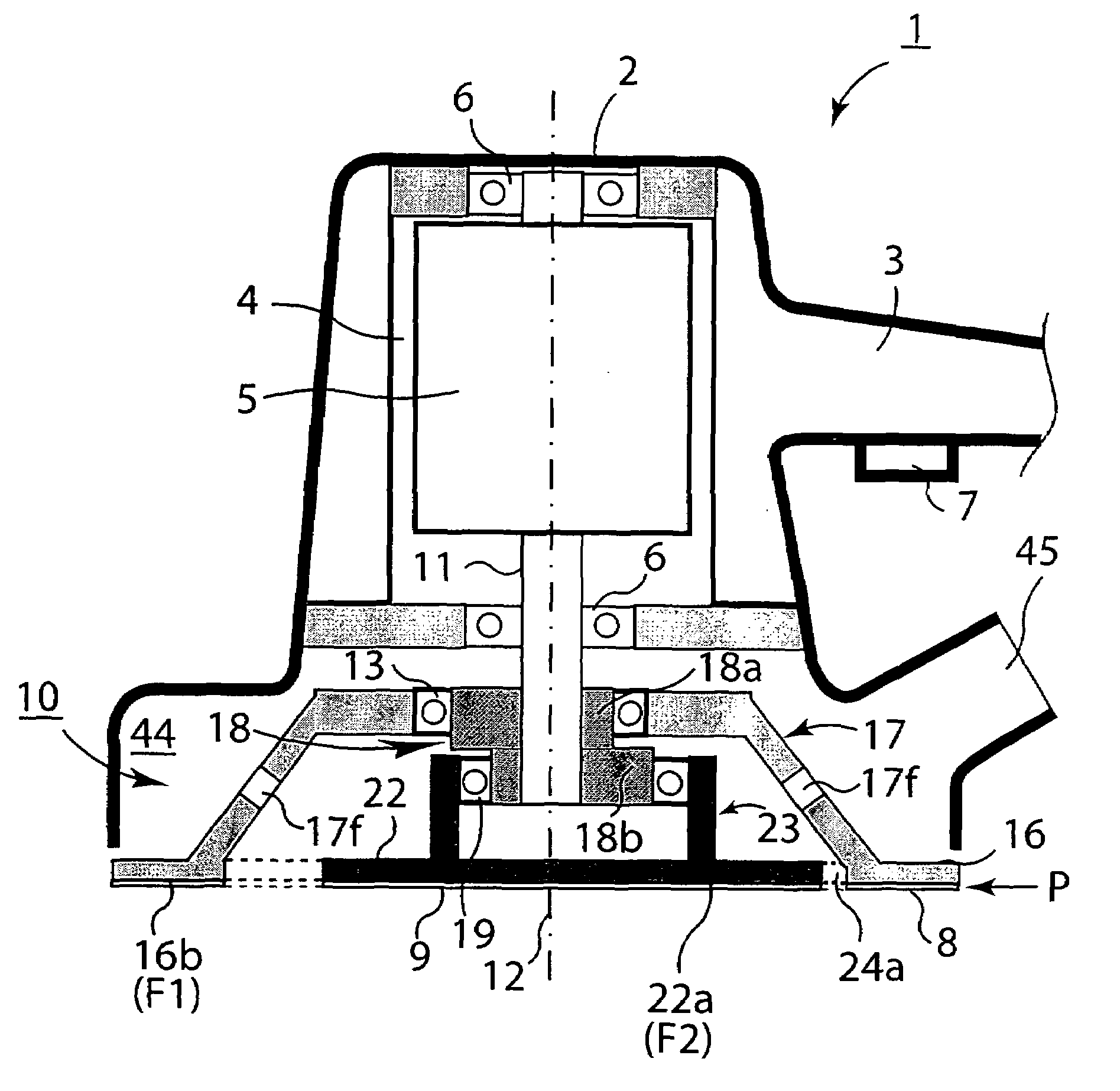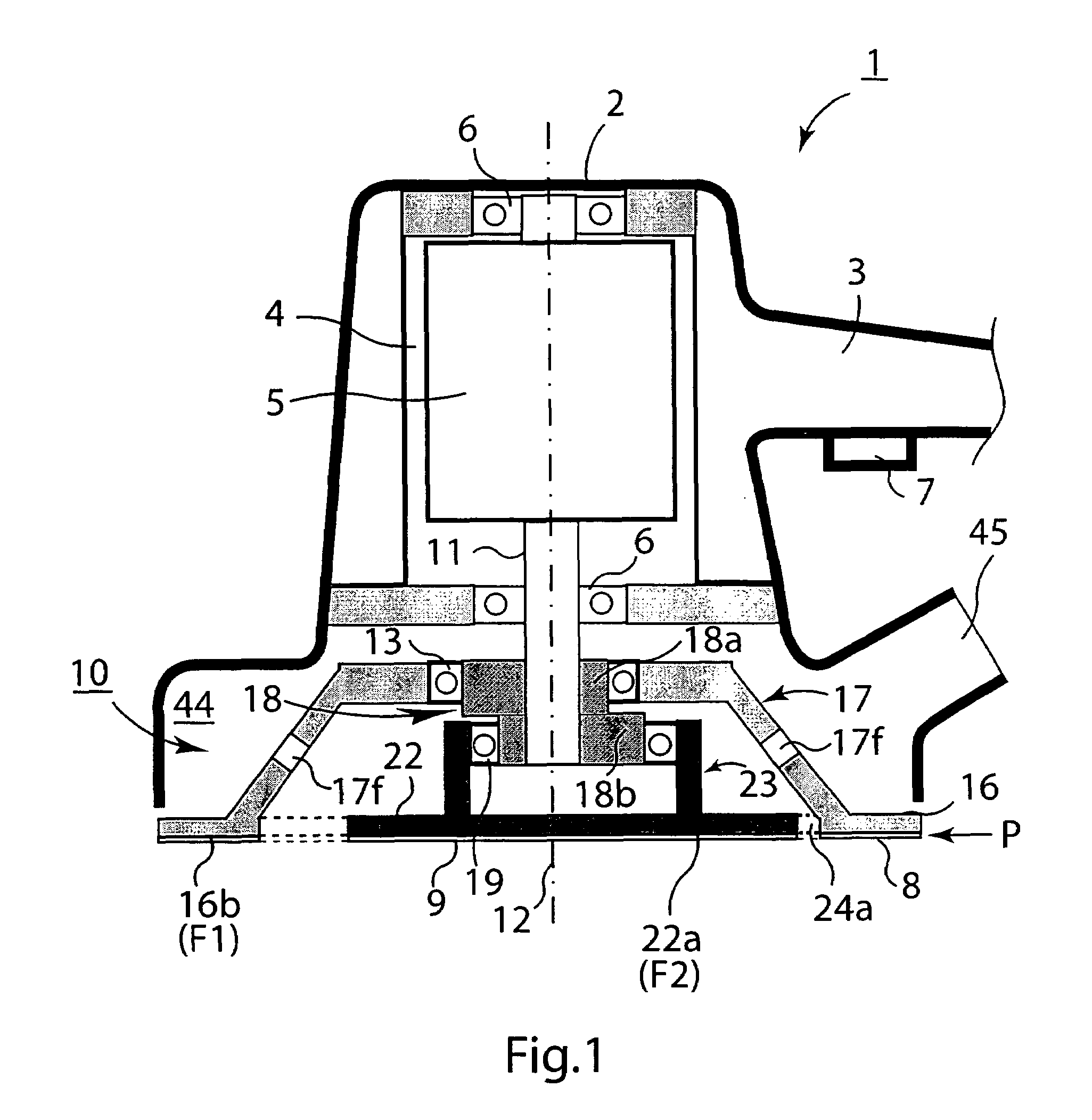Anti-vibration arrangement
- Summary
- Abstract
- Description
- Claims
- Application Information
AI Technical Summary
Benefits of technology
Problems solved by technology
Method used
Image
Examples
first embodiment
[0079]FIG. 1 illustrates a rotary sander 1 incorporating an anti-vibration arrangement 10 according to the present invention. The rotary sander 1 generally includes a housing 2 that has a handle or grip 3 and an internal volume 4 for housing an electric motor 5 with a variable speed of 2000 to 12000 rpm. The housing 2 is provided with an exhaust tube 45 beneath the handle 3 for exhausting air and dust from the interior 44. The electric motor 5 has a rotary drive shaft 11 with a longitudinal rotary axis 12 which is supported at the upper end of the housing 2 by ball, cylinder or oil bearings 6. A power switch 7 is positioned on the handle 3 and the rotary sander 1 is connected to mains power, a rechargeable battery or a compressed air tank which is not represented in FIG. 1. The anti-vibration arrangement 10 couples the rotary drive shaft 11 to abrasive elements (such as abrasive layers or sanding papers) for abrading a work piece (not shown) as described below.
[0080]Referring to FIG...
second embodiment
[0098]The second embodiment is driven by a drive shaft assembly and a gear assembly. The drive shaft assembly may be similar to that of FIG. 6 ie including two cams for neighboring pads A1, A3 and A2, A4, wherein each of the two drive shaft assemblies is connected to the rotary drive shaft 11. By such drive shaft assemblies and the gear assembly, the rotation of the rotary axis 12 is transferred to the four axes S1, S2, S3, S4 so that the external pad surfaces B1–B4 rotate in the directions T1–T4. The circles C1–C4 shown in solid line indicate the location of the associated cylindrical cam in the first position (1) whereas the circles shown in broken lines indicate the location of the associated cylindrical cam in the third position (3). In this embodiment, a significant reduction of vibrations is obtained. In addition to orbiting, the entire configururation will rotate arround the rotary axis 12, thereby performing pad rotations for coarse sanding.
[0099]FIG. 15 is a partial side vi...
PUM
 Login to View More
Login to View More Abstract
Description
Claims
Application Information
 Login to View More
Login to View More - R&D
- Intellectual Property
- Life Sciences
- Materials
- Tech Scout
- Unparalleled Data Quality
- Higher Quality Content
- 60% Fewer Hallucinations
Browse by: Latest US Patents, China's latest patents, Technical Efficacy Thesaurus, Application Domain, Technology Topic, Popular Technical Reports.
© 2025 PatSnap. All rights reserved.Legal|Privacy policy|Modern Slavery Act Transparency Statement|Sitemap|About US| Contact US: help@patsnap.com



